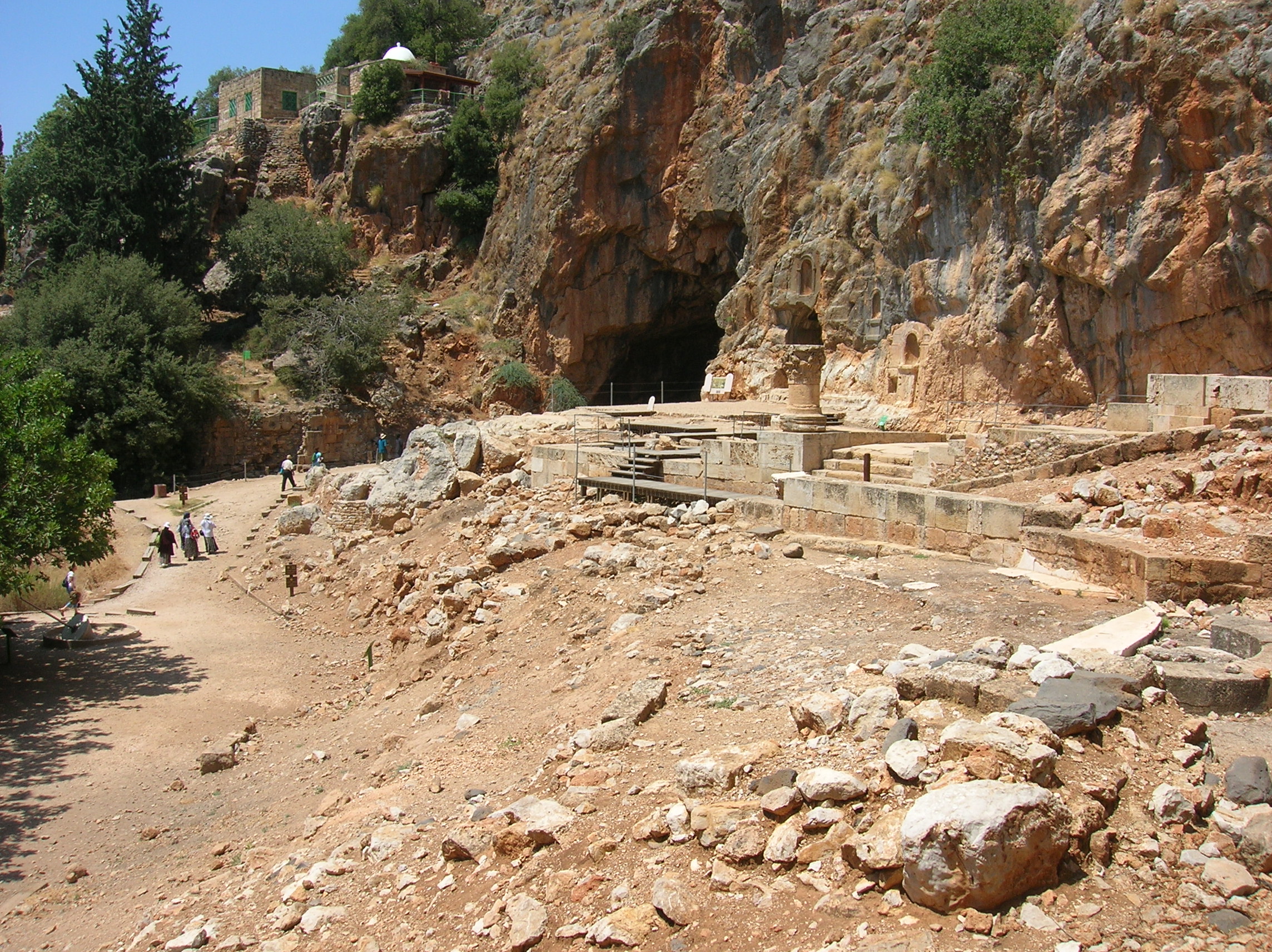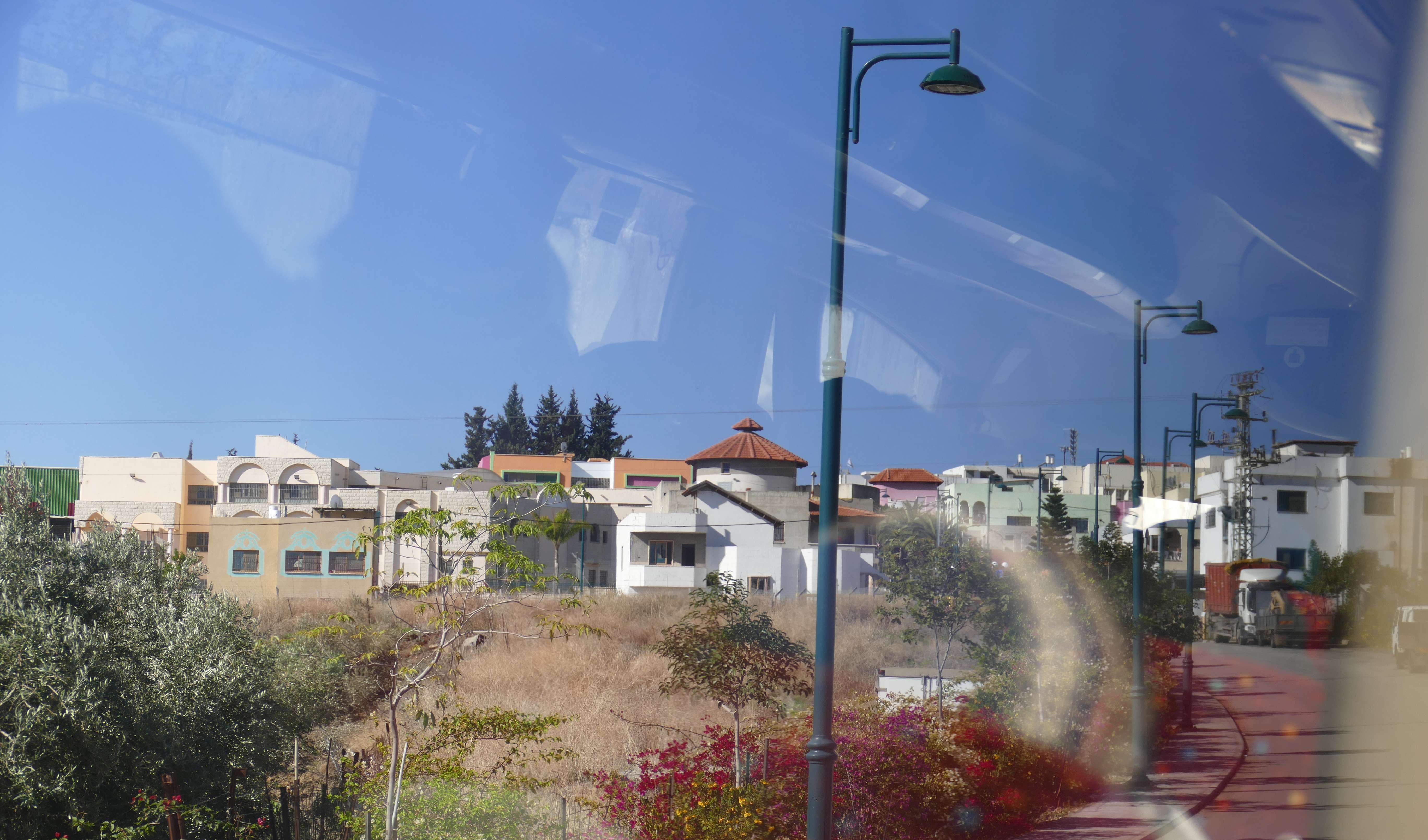|
Alawites
The Alawis, Alawites ( ar, علوية ''Alawīyah''), or pejoratively Nusayris ( ar, نصيرية ''Nuṣayrīyah'') are an ethnoreligious group that lives primarily in Levant and follows Alawism, a sect of Islam that originated from Shia Islam. The Alawites revere Ali (Ali ibn Abi Talib), considered the Imamate in Shia doctrine, first Imam of the Twelver Schools of Islamic theology, school. The group is believed to have been founded by Ibn Nusayr during the 9th century. Ibn Nusayr was a disciple of the tenth Twelver Imam, Ali al-Hadi and of the eleventh Twelver Imam, Hasan al-Askari. For this reason, Alawites are also called ''Nusayris''. Surveys suggest Alawites represent an important portion of the Syrians, Syrian population and are a significant minority in the Hatay Province of Turkey and northern Lebanon. There is also a population living in the village of Ghajar in the Golan Heights. Alawites form the dominant religious group on the Syrian coast and towns near the coast ... [...More Info...] [...Related Items...] OR: [Wikipedia] [Google] [Baidu] |
Schools Of Islamic Theology
Schools of Islamic theology are various Islamic schools and branches in different schools of thought regarding ''Aqidah, ʿaqīdah'' (creed). The main schools of Islamic Theology include the Qadariyah, Falasifa, Jahmiyya, Murji'ah, Muʿtazila, Batiniyya, Ash'ari, Ashʿarī, Maturidi, Māturīdī, and Traditionalist theology (Islam), Aṯharī. The main schism between Sunni Islam, Sunnī, Shia Islam, Shīʿa, and Kharijites, Kharijite branches of Islam was initially more political than theological, but over time theological differences have developed throughout the history of Islam. Divinity schools in Islam According to the ''Encyclopaedia of the Qurʾān'' (2006), "The Quran, Qurʾān displays a wide range of theological topics related to the religious thought of late antiquity and through its prophet Muhammad, Muḥammad presents a coherent vision of the creator, the cosmos and man. The main issues of Muslim theological dispute prove to be hidden under the wording of th ... [...More Info...] [...Related Items...] OR: [Wikipedia] [Google] [Baidu] |
Alevism
Alevism or Anatolian Alevism (; tr, Alevilik, ''Anadolu Aleviliği'' or ''Kızılbaşlık''; ; az, Ələvilik) is a local Islamic tradition, whose adherents follow the mystical Alevi Islamic ( ''bāṭenī'') teachings of Haji Bektash Veli, who is supposed to have taught the teachings of Ali and the Twelve Imams. Differing from Sunnism and other Twelver Shia, Alevis have no binding religious dogmas, and teachings are passed on by a spiritual leader. They acknowledge the six articles of faith of Islam, but may differ regarding their interpretation. Adherents of Alevism are found primarily in Turkey and estimates of the percentage of Turkey's population that are Alevi include between 4% and 15%. Etymology "Alevi" () is generally explained as referring to Ali, the cousin and son-in-law of Muhammad. The name represents a Turkish form of the word '' ‘Alawi'' ( ar, علوي) "of or pertaining to Ali". A minority viewpoint is that of the Ishikists, who assert, "Alevi" was ... [...More Info...] [...Related Items...] OR: [Wikipedia] [Google] [Baidu] |
Hatay Province
Hatay Province ( tr, Hatay ili, ) is the southernmost province of Turkey. It is situated almost entirely outside Anatolia, along the eastern coast of the Levantine Sea. The province borders Syria to its south and east, the Turkish province of Adana to the northwest, Osmaniye to the north, and Gaziantep to the northeast. It is partially in Çukurova, a large fertile plain along Cilicia. Its administrative capital is Antakya, making it the only Turkish province not named after its administrative capital or any settlement. Sovereignty over most of the province remains disputed with neighbouring Syria, which claims that the province had a demographic Arab majority, and was separated from itself against the stipulations of the French Mandate of Syria in the years following Syria's occupation by France after World War I. History Antiquity Settled since the early Bronze Age, Hatay was once part of the Akkadian Empire, then of the Amorite Kingdom of Yamhad. Later, it beca ... [...More Info...] [...Related Items...] OR: [Wikipedia] [Google] [Baidu] |
Lebanon
Lebanon ( , ar, لُبْنَان, translit=lubnān, ), officially the Republic of Lebanon () or the Lebanese Republic, is a country in Western Asia. It is located between Syria to Lebanon–Syria border, the north and east and Israel to Blue Line (Lebanon), the south, while Cyprus lies to its west across the Mediterranean Sea; its location at the crossroads of the Mediterranean Basin and the Arabs, Arabian hinterland has contributed to History of Lebanon, its rich history and shaped Culture of Lebanon, a cultural identity of demographics of Lebanon#Religious groups, religious diversity. It is part of the Levant region of the Middle East. Lebanon is home to roughly six million people and covers an area of , making it the List of countries and dependencies by area, second smallest country in continental Asia. The official language of the state is Arabic, while French language, French is also formally recognized; the Lebanese Arabic, Lebanese dialect of Arabic is used alongside Mo ... [...More Info...] [...Related Items...] OR: [Wikipedia] [Google] [Baidu] |
Ibn Nusayr
Abū Shuʿayb Muḥammad ibn Nuṣayr al-Numayri ( ar, أبو شعيب محمد بن نصير النميري), died after 868, was considered by his followers as the representative () of the tenth Twelver Imam, Ali al‐Hadi and of the eleventh Twelver Imam, Hasan al‐Askari, and founder of the Alawites. Ibn Nusayr was known to his followers as a representative (Bab) of al‐Askari and of the twelfth Twelver Imam, Hujjat-Allah al-Mahdi during the Minor Occultation. A rival of his in claiming to be the bāb (door) to the Imams was Abu Yaqub Ishaq, founder of the Ishaqiyya. The followers of Ibn Nusayr are known as the Nusayris ( ar, نصيري) or, since the 1920s, the Alawis ( ar, علوي). Nusayr was an Arab from the northern tribe of Banu Numayr, although it has also been mentioned that he was of Persian origin but was associated with the Arab al-Namir tribe. Schisms After the death of al‐Askari the Shia community was faced with the issue of who the Imam's successo ... [...More Info...] [...Related Items...] OR: [Wikipedia] [Google] [Baidu] |
Al-Khaṣībī
Abu ʿAbd-Allāh al-Ḥusayn ibn Ḥamdān al-Jonbalānī al-Khaṣībī. ( ar, الحسين بن حمدان الخصيبي), died 969,; . The ''Encyclopædia Britannica'' cites 957 or 968 as two possible dates for his death. was originally from a village called ''Jonbalā'', between Kufa and Wasit in Iraq, which was the center of the Qarmatians. He was a member of a well-educated family with close ties to eleventh Twelver Imam Hasan al‐Askari and a scholar of the Islamic sect known as the Alawites or Nusayris, which is now present in Syria, Southern Turkey and Northern Lebanon. For a time, al-Khaṣībī was imprisoned in Baghdad, due to accusations of being a Qarmatian. According to the Alawites, after settling in Aleppo, under the rule of the Shia Hamdanid dynasty, he gained the support and aid of its ruler, Sayf al-Dawla, in spreading his teachings. He later dedicated his book ''Kitab al‐Hidaya al‐Kubra'' to his patron. He died in Aleppo and his tomb, which became ... [...More Info...] [...Related Items...] OR: [Wikipedia] [Google] [Baidu] |
Ghulat
The ( ar, غلاة, 'exaggerators', 'extremists', 'transgressors', singular ) were a branch of early Shi'i Muslims thus named by other Shi'i and Sunni Muslims for their purportedly 'exaggerated' veneration of the prophet Muhammad (–632) and his family, most notably Ali ibn Abi Talib (–661) and his descendants, the Shi'i Imams. The term mainly refers to a wide variety of now extinct Shi'i sects who were active in 8th/9th-century Kufa (southern Iraq), and who despite their sometimes significant differences shared a number of common ideas. These common ideas included the attribution of a divine nature to the Imams, the belief that souls can migrate between different human and non-human bodies ( or metempsychosis), a particular creation myth involving pre-existent 'shadows' () whose fall from grace produced the material world, and an emphasis on secrecy and dissociation from outsiders. The ideas of the have at times been compared to those of the late antique gnostics, but the e ... [...More Info...] [...Related Items...] OR: [Wikipedia] [Google] [Baidu] |
Shia Islam
Shīʿa Islam or Shīʿīsm is the second-largest branch of Islam. It holds that the Islamic prophet Prophets in Islam ( ar, الأنبياء في الإسلام, translit=al-ʾAnbiyāʾ fī al-ʾIslām) are individuals in Islam who are believed to spread God in Islam, God's message on Earth and to serve as models of ideal human behaviour. So ... Muhammad in Islam, Muhammad designated Ali, ʿAlī ibn Abī Ṭālib as his Succession to Muhammad, successor (''khalīfa'') and the Imamah (Shia doctrine), Imam (spiritual and political leader) after him, most notably at the event of Ghadir Khumm, but was prevented from succeeding Muhammad as the leader of the Muslims as a result of the choice made by some of Companions of the Prophet, Muhammad's other companions (''ṣaḥāba'') at Saqifah. This view primarily contrasts with that of Sunni Islam, Sunnī Islam, whose adherents believe that Muhammad did not appoint a successor before Death of Muhammad, his death and consider Abu ... [...More Info...] [...Related Items...] OR: [Wikipedia] [Google] [Baidu] |
Shia
Shīʿa Islam or Shīʿīsm is the second-largest branch of Islam Islam (; ar, ۘالِإسلَام, , ) is an Abrahamic monotheistic religion centred primarily around the Quran, a religious text considered by Muslims to be the direct word of God (or ''Allah'') as it was revealed to Muhammad, the .... It holds that the Prophets and messengers in Islam, Islamic prophet Muhammad in Islam, Muhammad designated Ali, ʿAlī ibn Abī Ṭālib as his Succession to Muhammad, successor (''khalīfa'') and the Imamah (Shia doctrine), Imam (spiritual and political leader) after him, most notably at the event of Ghadir Khumm, but was prevented from succeeding Muhammad as the leader of the Muslims as a result of the choice made by some of Companions of the Prophet, Muhammad's other companions (''ṣaḥāba'') at Saqifah. This view primarily contrasts with that of Sunni Islam, Sunnī Islam, whose adherents believe that Muhammad did not appoint a successor before Death of Muh ... [...More Info...] [...Related Items...] OR: [Wikipedia] [Google] [Baidu] |
Twelver
Twelver Shīʿīsm ( ar, ٱثْنَا عَشَرِيَّة; '), also known as Imāmīyyah ( ar, إِمَامِيَّة), is the largest branch of Shīʿa Islam, comprising about 85 percent of all Shīʿa Muslims. The term ''Twelver'' refers to its adherents' belief in twelve divinely ordained leaders, known as the Twelve Imams, and their belief that the last Imam, Imam al-Mahdi, lives in Occultation and will reappear as ''The promised Mahdi'' ( ar, المهدي المنتظر). According to the Shīʿa tradition, the Mahdi's tenure will coincide with the Second Coming of Jesus (ʿĪsā), who, along with Mahdi, would kill the Dajjal. Twelvers believe that the Twelve Imams are the spiritual and political successors to the Islamic prophet Muhammad. According to the theology of Twelvers, the Twelve Imams are exemplary human individuals who not only rule over the Muslim community (''Ummah'') with justice, but are also able to preserve and interpret the Islamic law (''sharīʿ ... [...More Info...] [...Related Items...] OR: [Wikipedia] [Google] [Baidu] |
Golan Heights
The Golan Heights ( ar, هَضْبَةُ الْجَوْلَانِ, Haḍbatu l-Jawlān or ; he, רמת הגולן, ), or simply the Golan, is a region in the Levant spanning about . The region defined as the Golan Heights differs between disciplines: as a geological and biogeographical region, the term refers to a basaltic plateau bordered by the Yarmouk River in the south, the Sea of Galilee and Hula Valley in the west, the Anti-Lebanon with Mount Hermon in the north and Wadi Raqqad in the east. As a geopolitical region, it refers to the border region captured from Syria by Israel during the Six-Day War of 1967; the territory has been occupied by the latter since then and was subject to a de facto Israeli annexation in 1981. This region includes the western two-thirds of the geological Golan Heights and the Israeli-occupied part of Mount Hermon. The earliest evidence of human habitation on the Golan dates to the Upper Paleolithic period. According to the Bible ... [...More Info...] [...Related Items...] OR: [Wikipedia] [Google] [Baidu] |
Ghajar
Ghajar ( ar, غجر, he, ע'ג'ר or ) is an Alawite-Arab village on the Hasbani River, on the border between Lebanon and the Israeli-occupied portion of Syria's Golan Heights. In , it had a population of . History Early history Control over Ghajar has changed hands many times. Three hundred years ago, the village was known as Taranjeh. It was renamed Ghajar under the rule of the Ottoman Empire, when the land was allegedly seized from the "villagers" by Kurds and forcibly sold. According to "local" legend, the Kurdish governor of Ghajar tried to ride his horse onto the tomb of a local holy man, Sheikh al-Arba'in. The horse refused and the following day a fire broke out, destroying the governor's shield and sword. The Kurds fled and quickly sold it back. Modern era In 1932, the residents of Ghajar, predominantly Alawites, were given the option of choosing their nationality and overwhelmingly chose to be a part of Syria, which has a sizable Alawite minority. Prior to th ... [...More Info...] [...Related Items...] OR: [Wikipedia] [Google] [Baidu] |





_-_photograph_of_manuscript_as_shown_in_ed._Mustafa_Ghalib_1964_(cropped).png)

.png)


